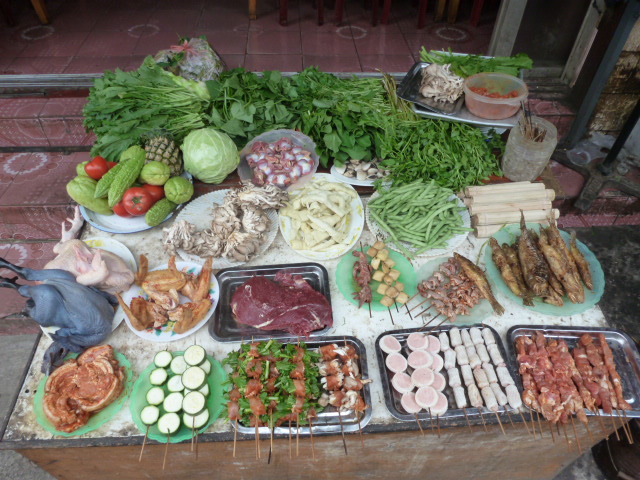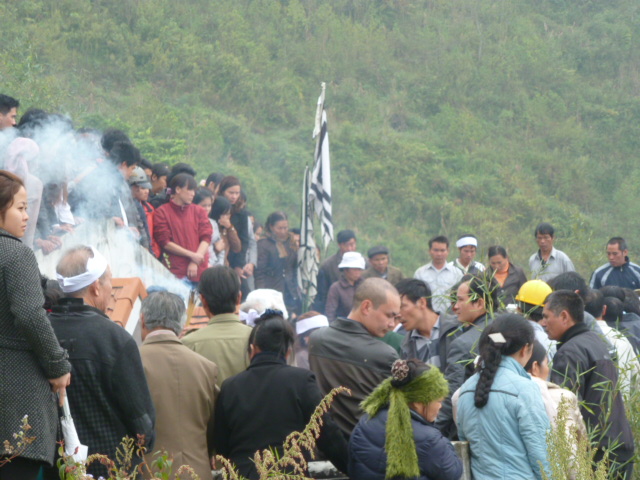“The place was tiny,” Will McCarthy writes. “Maybe thirty people sitting on the floor and a few benches filled it. It was also gaudy. There were more neon lights than you’d think could fit in such a small space. And the music was so good I assumed it was recorded.”

Four people were in front of the altar, a priest, who was kneeling and dressed in a bright yellow robe, and three attendants sitting in a semicircle around her. The priest then lit a cigarette and moved her arm, the upper arm straight out to her side, the forearm straight up. “Three right angles, and the cigarette, sticking straight up between her fingers, made a fourth, all in one plane,” Will said. “She brought the cigarette back to her mouth in one robotic motion, took a drag and then whipped her arm back into the right-angle position and exhaled. She repeated that movement three times and handed the cigarette to one of the attendants, who sat there and finished it without ceremony – just a guy sitting on the floor having a smoke.”
Prayers were said. Then the helpers took a large red cloth and tossed it up in the air – “expertly; they done this before” – so that it landed with the priest’s head in its exact centre and the cloth draped around her body. “As soon as the cloth settled, the priest started to shake, not violently, but close enough. She shook for maybe fifteen seconds, stopped, waited for the cloth to be lifted and stood up.”
The priest then removed her yellow robe, to reveal a white one with a yellow sash underneath. She then performed a series of movements with two ceremonial short-swords, prayed and then repeated the same movements with two burning torches. “The movements, a combination of manoeuvres with swords/torches and dance steps, were graceful enough but not beautiful,” says Will. “They were efficient.”

After the fire dance, the helpers replaced the yellow sash with a red one and over that, a red robe, and the priest repeated the entire ceremony, the cigarette, the swords, all of it, wearing the red sash and robe. Then she repeated it while wearing a blue robe. And then again in a peach-coloured robe and sash.
“I asked the guy sitting next to me how long the ceremony lasted,” Will said. “Twelve hours, he said. That’s why the efficient dancing. At some point I heard a tiny electric crackle that made me realize the music was live. I stood up and saw, in an alcove behind 20 empty cans of Red Bull and a tiny amplifier, two men sitting on the floor, one playing a box drum and the other picking a long-necked two-stringed instrument with a very big circular body.”
The two people Will asked disagreed on whether the ceremony was Taoist or Buddhist, but both said that “the purpose of the Purpose” was to atone for sins, and each repetition represents different sins: the sins of the mountain, the sins of the river, and so on.

“I left after five robe changes, but I hope they got around to the sins of the fire ant,” Will writes. “I stepped into a swarm of those little fu***rs once. They have so much to be sorry for.”
He then followed a funeral procession to the local burial ground, and when it arrived at the grave site, the members of the family of the deceased walked around with gifts for everyone in the procession – even a tourist. The guests were invited to choose one gift from the tray, a piece of candy, a cigarette or a chaw of betel nut. Bill picked betel nut. This turned out to be a bad choice, for several reasons.
“Just like in India, the nut is wrapped in a leaf with a smear of lime paste and something to add flavour,” Will explains. “In India the flavour enhancer is usually something sweet – a shard of candy or a bit of fruit. But here it was a too big piece of dried, fermented fish. Not delicious!”

The other problem was that betel nuts produce prodigious amounts of red saliva in the mouth of the chewer. “So there I was, a visitor in a foreign country, an uninvited guest at a solemn event, spitting on graves,” he says. “I’m sure my targets were good people, and I meant no harm.”




